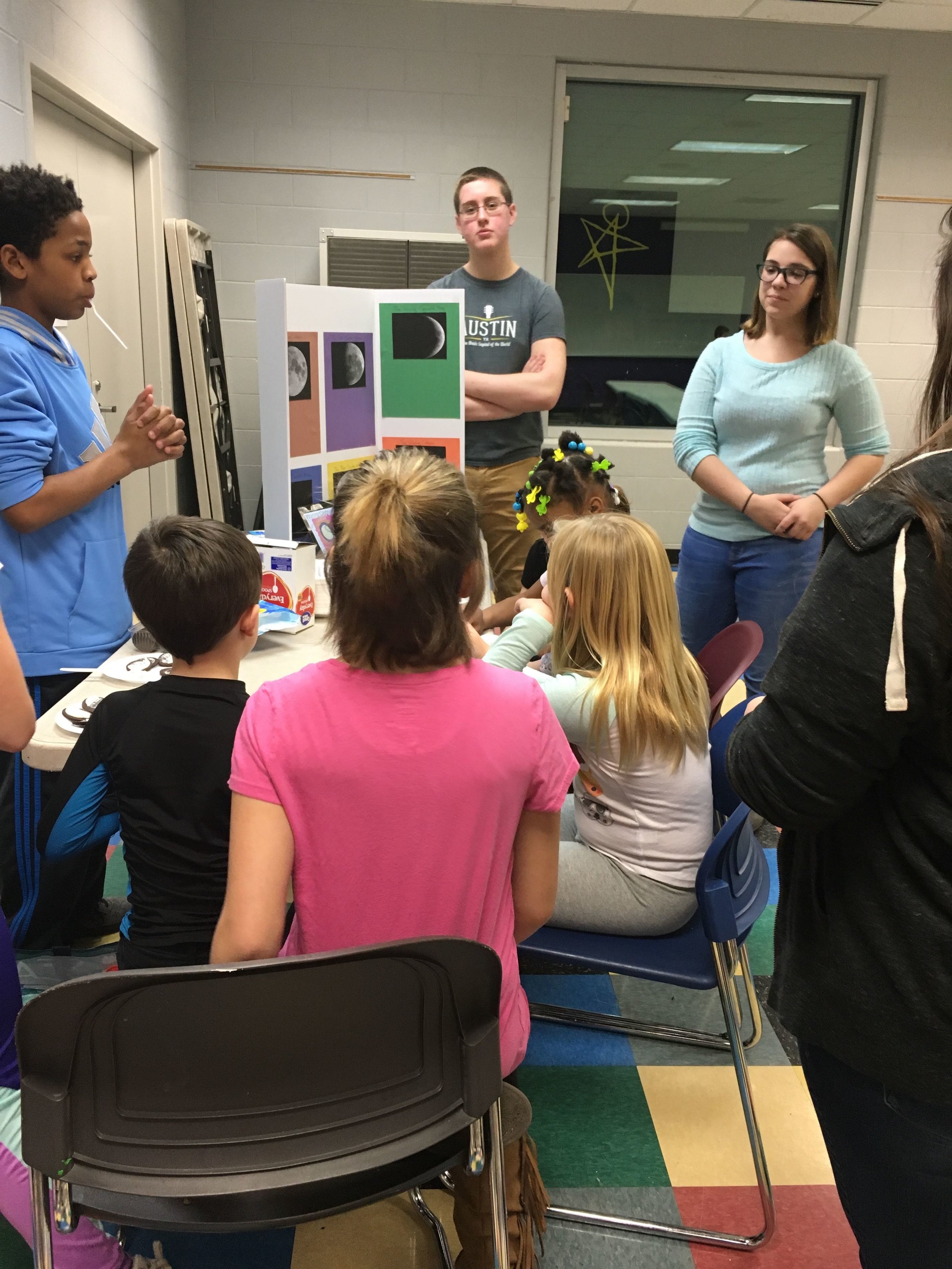Students presenting to the Boys & Girls Club.
Back to Middle School Pbl units
PBL Unit Name: It’s “Element”ary
Facilitator Name: Trisha Burns and Sara Rapp
Grade: 8th
Subject(s): Math and Science
Course Name: Pre-Algebra and Science 8
PBL Unit Description & Content Topics Addressed: Students design a data-driven science demonstration for elementary-aged students to do with them out in the community or at least not during the normal school day.
Math: The big math focus is on using scatter plots to make predictions using a line of best fit and making them realize that they need to be specific with their steps in the instructions just like they would showing steps in solving equations. They also review fractions by writing out their recipes/material lists.
Science: In science, the students all become experts in a specific science, they practice the developing an experiment standards, and they work on the chemistry behind the demo. The chemistry part was the new standards they did for the project.
A. Learning Goals: Content Knowledge & Skills Addressed (Standards)
Math:
Scatter plot standards
Solving equations and reviews briefly
Pythagorean theorem
Fractions
Science:
Chemistry standards and reviews
Experiment standards
B. Driving Question: How can we as emerging science teachers give elementary students a data-driven science experience outside of the normal school day?
C. Entry Event: This video was used to present the problem. We then scaffolded the brainstorm process through a “Chalk Talk” where the students came up with the solution of helping out the teacher in the video.
D. Benchmarks & Scaffolding: It’s “Element”ary Benchmarks & Scaffolding
E. End Products: 15 minute lesson to present to elementary students. This looked very different for each group.
F. Rubric: It’s “Element”ary Rubric
G. Community Partnerships
Foundation for Youth (Boys and Girls Club of Columbus)-the director helped us at the beginning to help create the solution criteria and physical limitations for his space and we were part of a Friday Night activity where we presented our lesson plans in small group rotations.
6th graders from 2 elementary schools gave feedback on the experiences when they came to visit our school.
After school program at an elementary school-used two days for the students to do their lesson plans for the students in the program.
UDL facilitator for elementary school in district came to give our students suggestions for creating lessons for elementary students.
Students presenting at an after school program.
Authenticity & Relevance (Real-World Connections, Applied Learning, Active Exploration)
We had an elementary school UDL (Universal Design for Learning) Facilitator come in and talk to the students about how to design a 15 minute lesson for elementary-aged students.
The students got to pick their own age level and science standard to teach.
They got to develop their own experiment to make sure they were giving the elementary students the best possible demonstration.
They had to use their data table from the experiment to create a scatter plot and find the line of best fit from their experiment.
Students got to meet with their community partners to make sure their plans would work in the community programs.
Inquiry: Chalk Talk with questions of what makes a fun science experience, what do you remember from elementary school, how can we help solve the problem outside of the normal school day?
Research the elementary science standards and choose a standard they wanted to work with
Decision matrix in their group to come up with the best demonstration or experience idea
Design their own experiment
Create lesson plan
Student Voice & Choice
They chose community partner/organization to work with
They chose their elementary science standard and demonstration.
They chose the solution criteria to pick the best standard/demonstration.
They designed their own experiment.
They chose what to do with their 15 minutes for the lesson plan.
Employability (21st Century) Skills Addressed
Agency:
Monitoring benchmarks
Seeking feedback
Impacting community
Grow from setbacks
Build confidence
Build relationships
Oral Communication: Presenting their lessons
Written Communication: Writing a proposal and a lesson plans
Formative & Summative Assessment Activities
The content quizzes/test we gave them are on itslearning so we can’t share them, but they were normal tests over the standards. We used the scaffolding pieces at the top to give them feedback as they went along.
Required Materials and/or Tools: This depends on the students’ choices of demonstration. I will say this is one of the more expensive projects we do because all groups need a lot of materials to run their experiments and then do their lessons in rotations.
Examples of Student Work
Project Pictures



